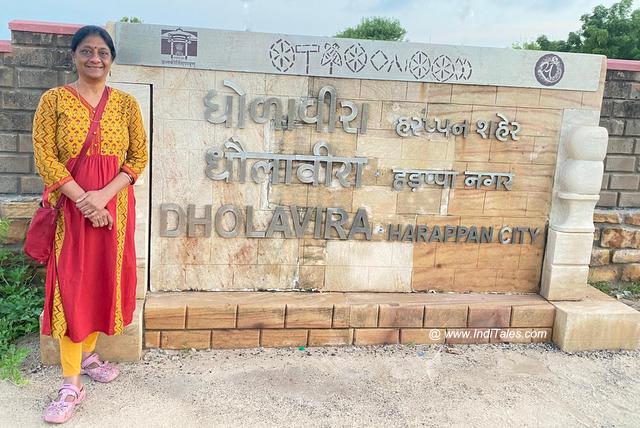Dholavira had been on my want checklist for a very long time. Since childhood, visiting the Indus Valley websites of Harappa and Mohenjo-daro was a dream. Because of political realities of our occasions, it’s nonetheless a dream. Nonetheless, due to latest archaeological discoveries, I used to be lucky sufficient to go to Lothal and Rupnagar a number of years in the past, discover Rakhigarhi final 12 months, and at last expertise Dholavira this 12 months.
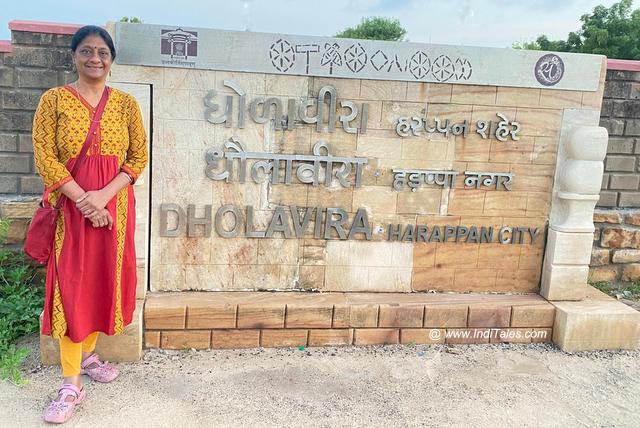
Our journey started from Narayan Sarovar, on the western fringe of India, driving in the direction of Dholavira via the fascinating Kadhiya Dhroh gorge. By late night, we reached the well-known 31 km street, usually referred to as the “street to heaven,†which connects Khadir Wager Island to the mainland. Dholavira is uniquely located on an island surrounded by the pristine white expanse of the Rann of Kutch.
The subsequent morning, we walked from our resort to the Dholavira heritage web site. The broad, empty roads mirrored a lean vacationer season, making the stroll peaceable and pleasurable. The positioning opens at dawn, and we arrived simply because the solar appeared. The guards had been nonetheless making ready to open, the museum was closed and no guides had been accessible early within the morning. Undeterred, we merely entered and immersed ourselves within the photograph documentation lining the walkway.
What’s Dholavira?
Dholavira is a UNESCO World Heritage Web site positioned on the Tropic of Most cancers. It’s the sixth largest Indus Valley web site on the Indian subcontinent and the second largest in India, after Rakhigarhi. Formally found by Jagatpati Joshi in 1967-68 following its native discovery, excavations continued till 2005. The positioning is called after a close-by village.
Archaeologists reveal that Dholavira was a well-planned metropolis inhabited for at the least 1,500 years. Located between two seasonal rivers, Mansar and Manhar, it boasts a citadel-like construction and elaborate water administration methods. Proof suggests it was a producing and buying and selling hub with far-reaching industrial hyperlinks, specifically with West Asia.
Structure
Spanning 54 acres, Dholavira’s structure kinds a parallelogram trapped between the Mansar River to the north and the Manhar River to the south. The positioning is split into three predominant elements — the Citadel that additional splits into the fortress and bailey, the center city, and the decrease city. Fortification seemingly started round 3000 BCE, with town totally developed by round 2600 BCE. Each the Citadel and center city are fortified, whereas the decrease city stays open. A ceremonial floor separates the fortress from the center city. Archaeologists found 17 gates, of those the northern and japanese gates being probably the most elaborate, probably used for ceremonies. A burial floor with rock-cut chambers lies southwest of the city, although no skeletal stays have been discovered there.
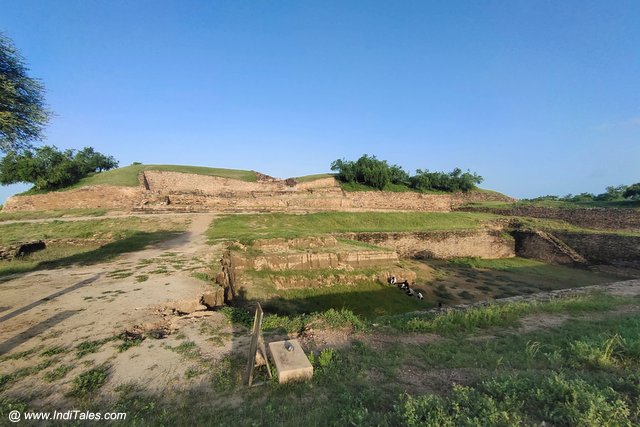
To a customer, the primary placing function is the imposing citadel rising above floor degree. Standing earlier than the east entrance at dawn, it jogged my memory of the Borobudur Temple in Indonesia, a web site I had additionally visited early within the morning. The citadel has main 4 gates aligned with the cardinal instructions. The northern gate as soon as featured a large wood door and a big signboard with ten letters—probably the oldest recognized signboard on the earth. Though the script stays undeciphered, some students imagine interpretations are doable.
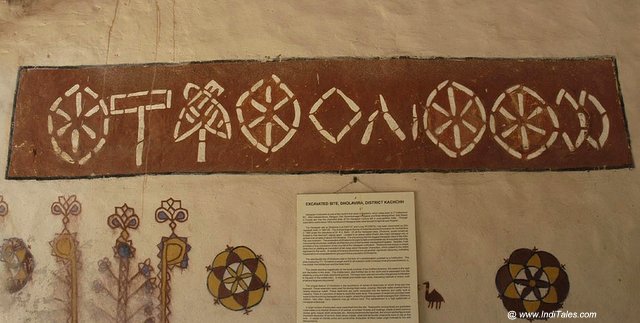
We entered via this north gate; the signboard is now preserved in a museum. The gate passageway is flanked by chambers seemingly occupied by guards. A staircase, presently a short lived wood construction for guests’ security, results in the highest the place the total web site is seen towards the sky.
At first, the stone formations appear random, however the southeastern part, the very best mound, was the fortress. Nonetheless, over time, the excellence between this and different areas has blurred.
Continuity of Civilization
What fascinated me most had been the round foundations bearing a placing resemblance to the standard Bhoonga huts of Kutch. This earthquake-resistant design could reveal a hyperlink between the traditional Indus inhabitants and present locals. Some foundations embrace a small central pole-like stone, suggesting they had been used for oil extraction with animals like bulls—a Kolhu in Hindi.
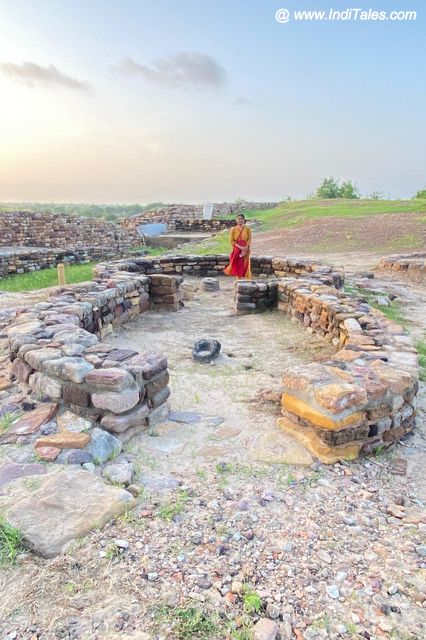
The east gate seemingly led on to the fortress, with limestone pillars quarried 2-3 km away nonetheless seen. All through Indus websites, rooms are typically notably small, main me to wonder if they served as dwellings or storage areas for buying and selling items. Adjoining to the west gate lies a bead manufacturing facility, which can have functioned as an administrative or industrial workplace. The western fortress space, referred to as Bailey or Upa-Prasad in Hindi, was in all probability residence to the non-royal elite. Close by stand 4 sq. granaries.
Water Administration at Dholavira
Dholavira’s most spectacular function is its superior hydraulic engineering. Positioned between the seasonal Mansar and Manhar rivers, archaeologists uncovered a number of examine dams used to channel water to giant reservoirs through stone-carved waterways. Such dams are distinctive to Dholavira amongst Indus Valley websites.
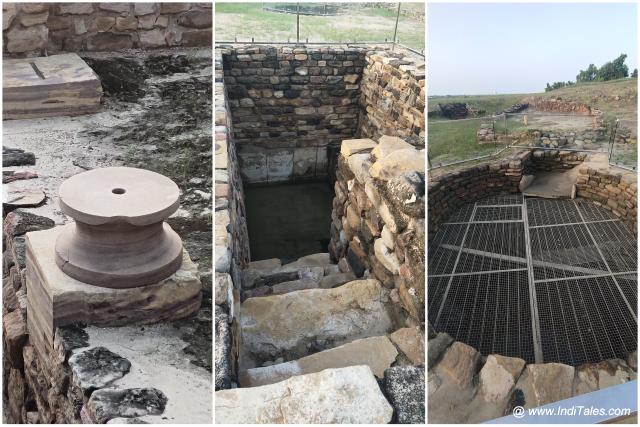
As you enter, a large water reservoir with staircases descending 30 steps at three corners stands out. The reservoir comprises rock-cut wells and stone steps, probably the earliest prototypes of stepwells like Rani Ki Vav. Close by, a unicorn figurine suggests the reservoir’s ceremonial significance to the folks.
Atop the location are two giant stepwells and a spherical properly, the latter measuring 4 meters in diameter—probably the biggest properly present in Indus Valley websites. Rope marks on a stone slab point out use of a pulley system to attract water.
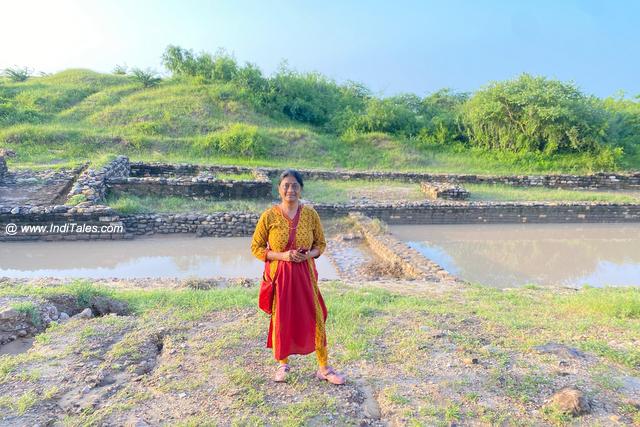
Most fascinating are the southern water administration tanks—a sequence of 5 interconnected reservoirs for storing and filtering water. The primary two tanks handle desilting, the central third reservoir is 3 times bigger than the Nice Bathtub at Mohenjo-daro, and the fourth tank incorporates a ramp for wheeled carriage entry paying homage to Surajkund. The fifth tank channels water to western tanks.
These reservoirs are excavated on rocky plateau beds and topped with brick and masonry embankments.
Think about a metropolis surrounded by water, expertly capturing river flows and rain to take care of ample provide year-round. Archaeologists discivered at the least 16 water reservoirs, underscoring the traditional proverb, “Jal hello Jeevan hai†— water is life.
Excavations and Artifacts
Excavations at Dholavira uncovered ceramics, beads, pillar fragments, shell objects, semi-precious stones, copper gadgets, seals, terracotta unicorn collectible figurines, stone bangles, gold, fishhooks, copper ingots, jars, and pottery. Many gadgets level to robust commerce hyperlinks with West Asia.
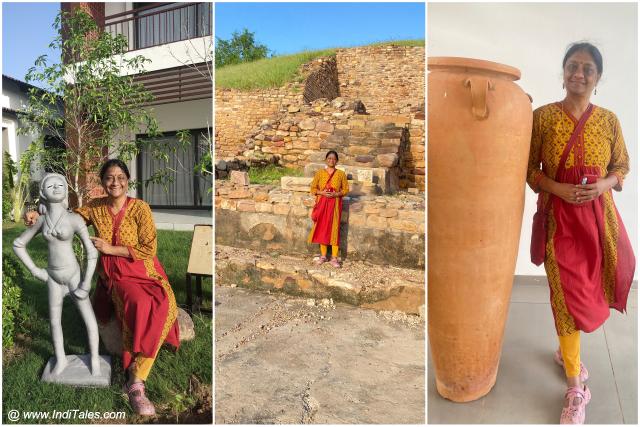
Visiting Dholavira is like stepping right into a vibrant chapter of historical past that continues to show us beneficial classes.
Journey Ideas for Dholavira
- Allocate about two hours to discover the location completely.
- Entry is free, and the location opens from dawn to sundown. Early morning visits provide one of the best lighting and a snug local weather for images.
- Guides can be found however not in early morning hours.
- The museum is closed on Fridays, so plan accordingly.
- A number of resorts encompass Dholavira, providing engaging charges throughout lean seasons however greater costs throughout the Kutch competition.

